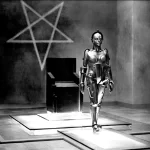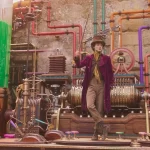Home Video Hovel: Tales From the Crypt: Demon Knight by Craig Schroeder

Admittedly, I’m a bit green to the Tales From the Crypt franchise. When the show was relevant, I was too young, eating up Nickelodeon’s tamer Are You Afraid of the Dark? and when I got older, I gravitated more towards The Twilight Zone and, eventually, Showtime’s Masters of Horror. But Demon Knight, the anthology franchise’s first foray into feature-length filmmaking, is a reminder of what makes Tales From the Crypt—an otherwise middling horror novelty—such a staple for horror-hounds. Demon Knight is gonzo, gory and a lot of fun—even if it is expendable.
Demon Knight is a stand-alone addition to Tales of the Crypt’s seven-season anthology span on HBO. Bookended by a prologue and epilogue with the Keeper himself (which is both pointless and more fun than it has any business being) Demon Knight introduces The Collector (played by a rare toupee-less 90s Billy Zane) a powerful demon who has come to earth to steal an old relic—containing the literal blood of Jesus Christ—capable of unleashing Hell on Earth. Brayker (an inspired William Sadler), a violent drifter, is the protector of the relic, who finds himself in a small-town Texas hotel when The Collector comes calling. With the help of a rag-tag group of innkeepers, prostitutes and drunks, Brayker must fight The Collector and his horde of slimy, undead corpses.
Directed by Ernest Dickerson—who has distinguished himself by directing great episodes in otherwise prosaic television series (The Walking Dead’s season two episode “Beside the Dying Fire” and Dexter’s fourth season entry “Roadkill”, to name a few)—may be at his best tasked with the impossible: generate inspired scares in a purposefully campy endeavor that begins and ends with an almost literal wink. Dickerson establishes the world of Demon Knight quickly. Both recognizable within our reality and distinctly specific to 90s horror, it actually shares a very similar aesthetic with Garth Ennis’ seminal comic series Preacher, which would premier only a few weeks after Demon Knight’s 1995 release. And there’s something to be said for Dickerson’s ability to wrangle a number of drastically different acting styles into a cohesive whole. In addition to Billy Zane’s penchant for broad caricatures and William Sadler’s blue-collar badass character study, Thomas Haden-Church and a young Jada Pinkett deliver large performances that could easily swallow up the earth around them, let alone their co-stars. But somehow, they not just gel but are capable of generating general empathy. I’m speaking unironically when I say there’s a death in Demon Knight that is one of the more gut-wrenching kills of any 90s horror movie.
Despite mining nearly a half-dozen solid performances from a cavern of diverse 90s talent, the star of Demon Knight was always going to be the make-up and special effects. The Keeper still appears as a very obvious puppet, a conscious decision that allows the Keeper’s self-referential performance to be delivered with an easy wink. But the creatures in the film—most of which are puppets as well—are much more animated, the strings are quite literally hidden and the final product is an army of truly horrific ghouls. Dickerson and company opt for practical effects over CGI, which proves critical considering the sparse CGI is on a par with a Windows 98 screensaver.
Demon Knight suffers mightily at the hands of its own mythology. As many (including, most famously, Quentin Tarantino) have noted, this year’s It Follows suffers from a similar oversight: a muddied mythology leads to gaping plot holes and unearned crescendos. But whereas It Follows undercooked the rules of its universe, Demon Knight attempts to rationalize way too much of its gonzo premise. Much of the film’s back half is dedicated to unwarranted accounts of Christ’s crucifixion and a brief, yet confounding, aside that recounts Brayker’s time fighting in World War I. It’s a vain attempt to contextualize an off-the-wall B-flick that could exist perfectly well inside a vacuum. At the film’s start, it seems all involved know exactly the kind of movie they’re making; but after a series of self-important flashbacks and ridiculous rationalizing it seems the filmmakers lost sight of their mission statement. But that may not matter; in the end, Demon Knight is an uneven film packed with blood and viscera. It’s easily forgotten, but just as easily recalled for being a lot of fun. Which seems to fall perfectly in line with Tales From the Crypt’s pop-culture legacy.




























